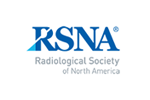How to Read Your Breast Imaging Report using BI‑RADS
Breast imaging detects and evaluates cancer and other breast abnormalities. Your doctor may use breast imaging to:
- screen in women at a higher risk for breast cancer
- investigate a breast “bump,” breast pain or abnormal discharge from the nipple
- supplement breast cancer screening
- determine the extent of cancer after a new diagnosis of breast cancer
- evaluate lumpectomy sites in the years following breast cancer treatment
- manage chemotherapy treatment in patients receiving neoadjuvant chemotherapy
- evaluate breast implants.
After your breast imaging exam, the radiologist will analyze the images and prepare a report for your doctor that summarizes the findings and impressions. For more information on radiology reports, see How to Read Your Radiology Report.
The Breast Imaging Report
In addition to specifying the reason (indication) for the exam and the technique used (mammography, magnetic resonance imaging (MRI) or ultrasound), your written Breast Imaging Report will include sections on:
- Comparison to Previous Imaging Exams
- Overall Breast Composition (Density)
- Important Findings
- Assessment (BI-RADS) and Management
Comparison to Previous Imaging Exams
The radiologist may compare your breast imaging exam with any available previous breast imaging exams that you have had. If you have had multiple breast imaging exams at the same time, the findings may be correlated.
It’s a good idea to obtain and keep copies of your images and reports. Bring them with you to appointments with your breast doctor and treatment team. Ask your imaging facility to download a copy of each imaging exam and report so the breast radiologist can compare your old images to any new breast imaging exams. To protect your privacy, only you can grant permission to share your images and reports with others. For more information, see How to Obtain and Share Your Medical Images.
Description of Overall Breast Composition (Density)
Breasts are composed of fatty, glandular, and connective (fibrous) tissues. Breast density is a proportional measure of these three types of tissue within the breast. Breasts are considered to be dense if they have a lot of glandular and connective tissue and not much fatty tissue. On mammography, dense breast tissue can make it harder to find cancer. Dense breast tissue may increase your breast cancer risk.
The radiologist will describe your level of breast density by assigning it to one of four categories:
- Almost entirely fatty breast. This breast consists almost entirely of fatty tissue with very little fibrous and glandular tissue.
- Scattered areas of fibroglandular density. The majority of this breast is fatty tissue with some scattered areas of dense breast tissue.
- Heterogeneously dense. The majority of this breast is dense glandular and fibrous tissue with some areas of less dense fatty tissue.
- Extremely dense. This breast is almost all dense fibrous and glandular tissue.
For more information on breast density, see the Dense Breasts page.
Findings
In this section, the radiologist will list findings that are of concern, suspicious, new, need more detailed imaging, or that are more extensive when compared to previous exams. Descriptions of the findings may include the size, shape, location, distribution, and features of masses, calcifications, and other abnormalities. When describing location, the breast radiologist will use terms that describe location as if a clock were drawn on the breast or as if the breast were split into different quadrants.
Assessment (BI-RADS) and Management
Radiologists use a standard numbering system called the Breast Imaging Reporting and Data System (BI-RADS) to categorize your imaging results and report your risk for cancer. BI-RADS is a common language developed by breast imaging experts to report findings on your scan. It helps eliminate mistakes and improve communication between members of your care team.
The radiologist will assign a BI-RADS number to each lesion (such as a mass, nodule, or observation) seen on the images. Your report may include more than one BI-RADS number because some of the findings may be considered to be cancer while others may not.
Radiologists use the same BI-RADS system to describe the results of mammograms, breast ultrasound, and breast MRI exams. BI-RADS classifies findings in one of seven categories:
- BR-0: test is incomplete; the radiologist may not be able to read the images and so additional scans are necessary to produce a final report.
- BR-1: test results are negative; no cancer is present.
- BR-2: test results are negative; some benign (non-cancerous) cysts or masses may be present and routine screening is recommended to monitor them.
- BR-3: test results are probably negative; however, there is a small (two percent) chance of cancer; the doctor will recommend a follow-up scan in six months to confirm that any findings are benign (non-cancerous).
- BR-4: test results are positive; an abnormality or suspicious mass is present, and a biopsy is recommended. Findings are additionally classified as:
- 4A: there is a low likelihood (2% to 10%) the finding is cancerous.
- 4B: there is a moderate likelihood (10% to 50%) the finding is cancerous.
- 4C: there is a high likelihood (50% to 95%) the finding is cancerous.
- BR-5: test results are positive; there is a 95% chance breast cancer is present, and a biopsy is highly recommended to confirm the results.
- BR-6: this category is reserved for those who have already had a biopsy to confirm a breast cancer diagnosis; the images tagged with this category show how the cancer is responding to treatment.
It is important to remember that a BI-RADS score is not a diagnosis. It is a means for your breast radiologist to efficiently communicate their impressions to your doctor along with their recommendations for next steps. In most cases, a higher score will result in a biopsy recommendation. The biopsy results will provide a diagnosis (whether cancer is or is not present) and help guide your doctor in recommending any further treatment. For more information, see the MR-Guided Breast Biopsy, Stereotactic Breast Biopsy, and Ultrasound-Guided Breast Biopsy pages.
The radiologist who read your imaging exam will send a signed report to your doctor who ordered the test. Many patients can get their radiology reports and medical images online. Ask your imaging facility if this is available. You should also receive a letter or report regarding your results in an easy-to-understand format.
Although you may have immediate access to this report, it is written for your healthcare provider. As a result, the report may contain a number of terms with which you may be unfamiliar. Use a highlighter to mark words, paragraphs, or whole sections of the report you do not understand. Write down any questions you have so you can review them with your doctor when you meet to discuss your results. If you still have questions, contact the imaging facility to ask if the radiologist is available to talk to you.
Next Steps
If you have a confirmed diagnosis of breast cancer, your next steps may include the following:
- Review and discuss your imaging and biopsy reports with your doctor.
- Ask for a second opinion at the same or another healthcare facility.
- Ask your doctor to refer you to a breast specialist who will work with you to create a treatment plan.
- Meet with your doctor and other specialists to review your images and health information. Together, your team will identify the best plan and recommend treatment options for you and your doctor to review.
- Ask your doctor if BRCA genetic testing would be appropriate.
This page was reviewed on September 09, 2024




